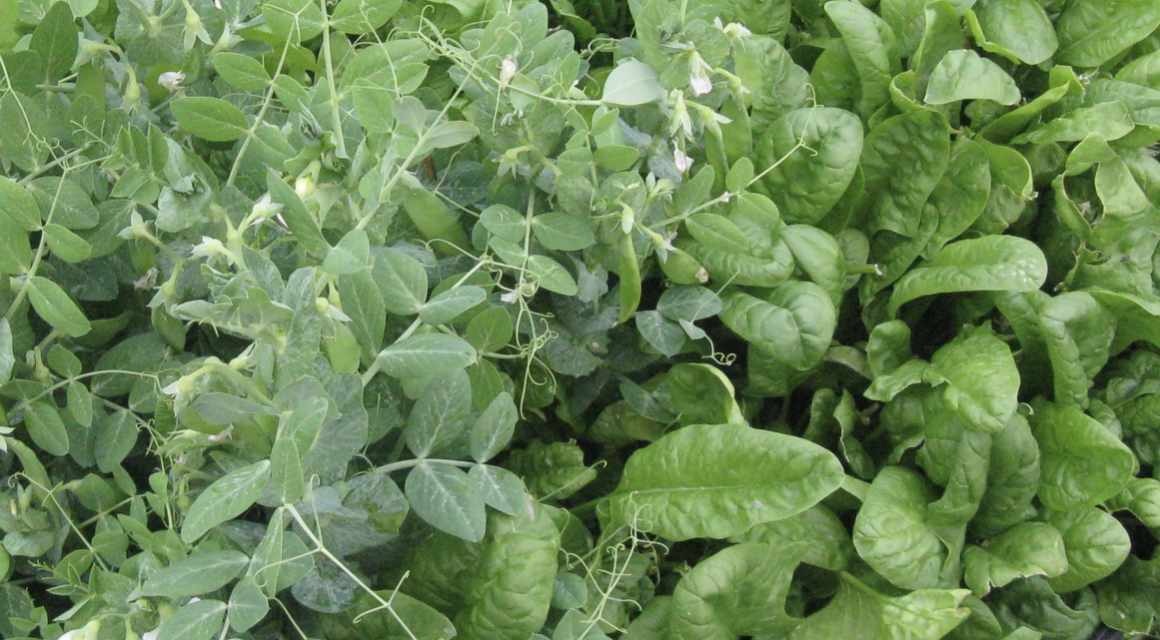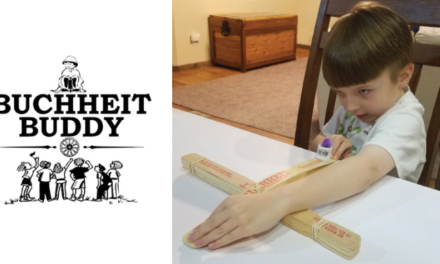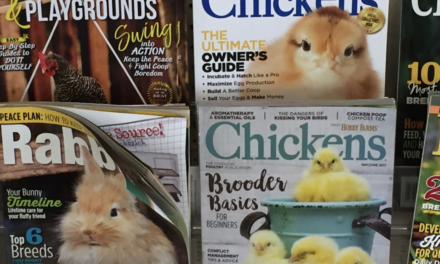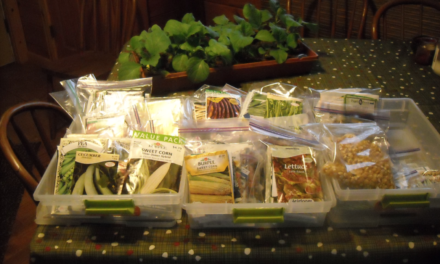Do you like fresh spinach in spring? It’s one of my favorite vegetables, especially when it’s late winter and snow is still on the ground. Now is the time to prep the beds and seed the cold frames. I have several cold frames that I plant in fall and basically do not disturb them all winter. I check on them to make sure they are fungus and moss free and not too dry but I try not to crack them open until early spring. Then they go to town with the lengthening days and start producing the most amazing leaves of green. There are few eatables more delectable than fresh picked tender sprigs of leaf lettuce and spinach with nary a bug in sight.
The spinach plant is tied to the length of the days. No matter what variety or weather conditions when the days get longer, that spinach plant will bolt. It will grow tall quickly and stop flowering as the seeds develop. This makes a fall planting when the seed can sprout and get established sensible. It will thrive in the cold spring days and not bolt until it’s almost spent anyway. By that time, you have had frequent, abundant harvests of greens.
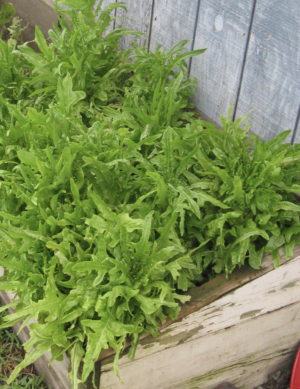
This is a photo of Amish Deer Tongue Lettuce that I planted in fall of 2015 that was some of the sweetest lettuce I have ever picked. No bugs are stirring this early in the season.
I triple crop my raised beds so replenishing the soil is a top priority before fall planting. Here I have worked up the soil and added a blend of composted rabbit manure to lighten the soil to prevent compaction. Soil compaction is a key reason some plants fail to thrive in containers and cold frames as their roots need air pockets in the soil. The composted rabbit manure will also add nutrients back into the soil. Rabbit manure is the only manure that can be incorporated into garden soil without composting first because it’s not hot manure. But to be on the safe side, I use my blend that has been slowly cooking all summer.
A trick to make sure the small seeds are evenly spread throughout the bed is to take sand or cornmeal and mix in with the seeds. Then you are able to tell where you have sown them.
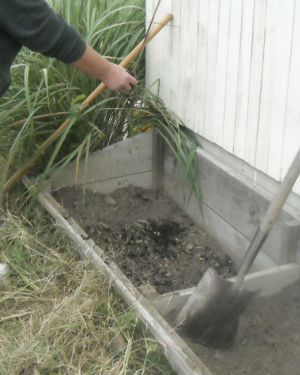
The final step is to check the condition of the windows for the cold frames. I check all the panes, glaze as needed and wash the glass.
Now all we have to do is wait for spring! If you have any questions on how to build a cold frame just send them to me and I will ask Jim for the answer. Set your head to have a good day! Anne May

